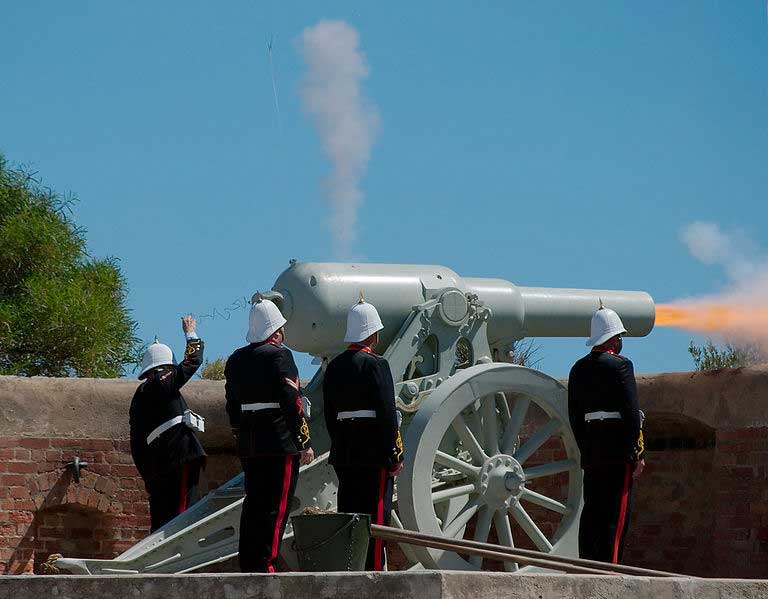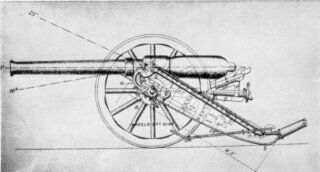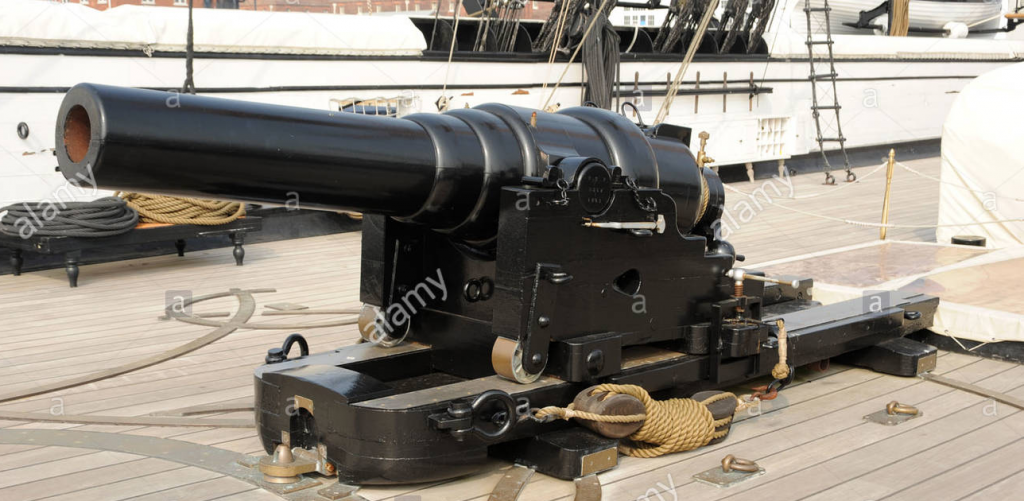Although breech loading cannon are in use in most armies and navies, the muzzle loading cannon is still very common and the British military is particularly attached to them.
These come in a variety of sizes, however, despite the size differences, loading and firing is essentially the same, though the big ones need a lot of extra hands and muscles! The monsters, such as the 100 ton guns defending Malta, have steam powered lifts to load them. A typical field gun needs a minimum of four to load, site and fire it and most need a crew of six or eight. The really big guns may have a dozen or more crew to operate them. Rifled muzzle loader cannon are the most common type in the British Army and Navy and very common in most other militaries as well.
Of the Big Guns in British service, most are of one of two type and manufacture. Armstrong Guns and Woolwich Guns.
Woolwich guns were made at the Royal Gun Factory in Woolwich on the east side of London. The type has come to personify the ultimate development of the muzzle loading rifled heavy gun. The guns came in sizes from 6 1/2 inch bores and 6 1/2 tons, to the big boys of 16 inch bores and 80 tons. The smallest gun was the 64 pounder, for the weight of the shell, and had a 6 1/2 inch bore. The big guns, the 16 inchers, were mounted in one ship, the H.M.S. Inflexible in 1880, before being declared obsolescent. The shell weighed in at 1600 pounds and each shot used 450 pounds of gunpowder.

Armstrong Guns It has been said that an Armstrong gun never burst, however one of the 100 ton guns did split during test firing at Magdala battery in Gibraltar, and one of the Italian guns cracked also. The original 4 British guns were divided between Gibraltar and Malta and of these only 2 guns survive today. They were beasts, with a 17.72 inch bore which was a little over 30 feet long. It’s ammunition weighed 2000 pounds, with 450 pounds of black powder behind it. Armor piercing, high-explosive and shrapnel shells were available, but it’s armor piercing qualities quickly became obsolete, with other advancements in breech loading and chemical composition of propellants. Shrapnel’s usefullness in these guns was condidered marginal and discontinued shortly. The gun’s maximum range was 8 miles, but it’s armor piercing shell was only effective out to 1 mile. Loading was a problem, as everything needed to be done with steam powered hydraulic loaders, and getting up a head of steam from go could take three hours, but this was considered acceptable, and once going could be fired four times a minute. It took a crew of 35 men to service each gun.

Not all cannon are so large. Light, portable field guns are essential for supporting infantry and cavalry in battle, along with breaking enemy formations and fortifications. Rough terrain can make positioning artillery particularly difficult. The solution to this was to design a Mountain Gun which was developed from warfare in Afghanstan and the frontier in northwest India. Fighting against irregular troops and tribesmen presented a unique challenge to protect columns traveling in hill country. Regular artillery couldn’t be dragged up mountains easily, so smaller guns were developed for mobility in mountainous areas. One such gun was the Screw Gun, the first to have a barrel broken down into 2 parts. This invention was to change British tactics in India and Afghanistan.

The Screw Gun was the brainchild of Colonel Cecil Brook le Mesurier of the Royal Artillery in 1877. His proposal was to break the gun down into parts to be carried by pack mules. The maximum practical load at the time for a mule was 200 pounds, so the 400 pound barrel was divided into two parts, to be screwed back together for action. It took at least 5 mules for the barrel, carriage and associated bits, then more mules for ammunition and powder.
It was a rifled muzzle loader The steel gun’s bore was 2.5 inches and the official nomenclature is 2.5 inch RML (for rifled muzzle loader). It was also called the 7 pounder gun, as the shell it fired weighed around 7 pounds. The gun could propel a shell to 1400 ft. per sec. with a charge of 24 oz. of black powder. The 66 inch length of the bore gave it an effective range of 4000 yards.

Breech Loading Cannon
Steadily replacing muzzle loading cannon on board ships and on the battlefield, breech loaders come in a variety of types and sizes. The details of the various breech mechanisms used by different countries is unimportant to play. A character trained in the basic routines involved in unlocking, loading, locking, firing, unlocking, clearing, loading… Can learn the routine for the different styles with minimal practice.


